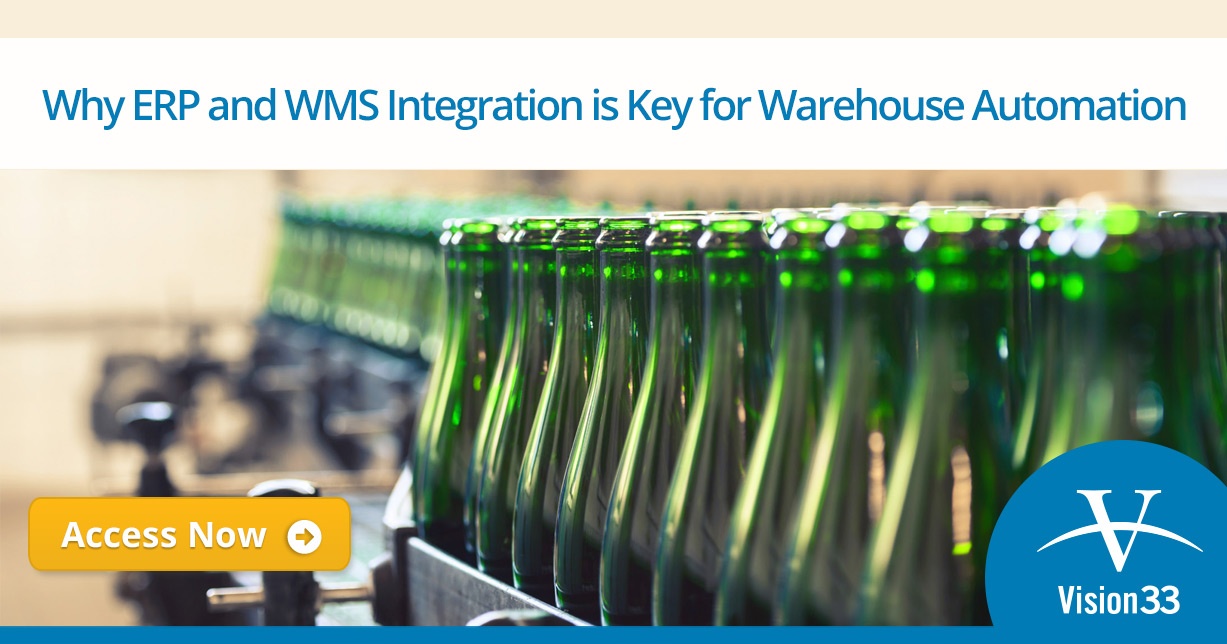Modern and Efficient Wholesale Distribution Starts With Cloud ERP
SAP Business One[Updated] One integrated solution streamlines operations, whether you distribute soft goods, hard...

May 16, 2018
Blog > Why ERP and WMS Integration is Key for Warehouse Automation in Distribution Companies
Enterprise resource planning (ERP) systems are the backbone of any wholesale or distribution business, automating business processes and enabling the flow of information between functional areas. Few ERP systems, however, include robust supply chain execution functionality. More typically, quality ERP solutions focus on related, but nonetheless essential, functionality for managing inventory such as tracking products as they’re picked, packed, and shipped to the customer. Many small to midsized enterprises (SMEs) – particularly those with high-volume and highly-automated distribution facilities – invest in a dedicated warehouse management system, or WMS, to digitize and automate all aspects of their inventory control.
A WMS system adds more sophisticated warehouse functionality to the functionality of an ERP system. This enables organizations to continuously monitor products’ progress as they move in, through and out of the warehouse; keep the receipt, storage and movement of goods under control; and use real-time intelligence to optimize product location and shelf duration.
But, the warehouse isn’t an island: other departments, such as manufacturing, purchasing, and customer service need to access warehouse data for decision-making. That means if an SME has a WMS system, it equally needs to have an ERP system that can talk directly, and seamlessly to it.
The trouble is, most third-party WMS applications are only interfaced, rather than seamlessly integrated, with their ERP solution. The two solutions are therefore run on separate databases or even separate servers and use middleware or batch export/import processes to manually move data between systems. This leads to unnecessary complexity and data duplication, and the need for custom interface development inevitably incurs yet more expense. With two discrete sets of inventory information, it’s impossible for departments to obtain a single version of the truth.
Is the difference between an interfaced and integrated ERP and WMS on a single platform so great? That depends on how important it is to an distribution company to ensure that orders are manufactured and shipped on time. If your ERP and WMS systems are only loosely coupled, you won’t be able to:
With full integration, SMEs have a unified system that covers all bases, cross-linked for visibility and control, giving SMEs the benefit of streamlined, transparent, end-to-end business processes. Goods can be optimally organized to make best use of physical warehouse space and employees’ time. And SMEs can feed the rest of the business with the single source of truth it needs to make reliable, fact-based decisions.
To learn about how Vision33 can help SMEs automate their warehouse with an integrated solution read Vision33’s ERP solution for Food and Beverage Manufacturers/Distributors product brief.
Subscribe to our newsletter to receive our latest blog posts, case studies and ERP news delivered straight to your inbox.
[Updated] One integrated solution streamlines operations, whether you distribute soft goods, hard...
Manufacturing and distribution require efficiency, automation, and integration. Learn why the best...
[Updated] Discover how SAP Business One empowers the food industry with real-time traceability,...
Recieve our latest blog posts, case studies, and ERP news
delivered straight to your inbox.